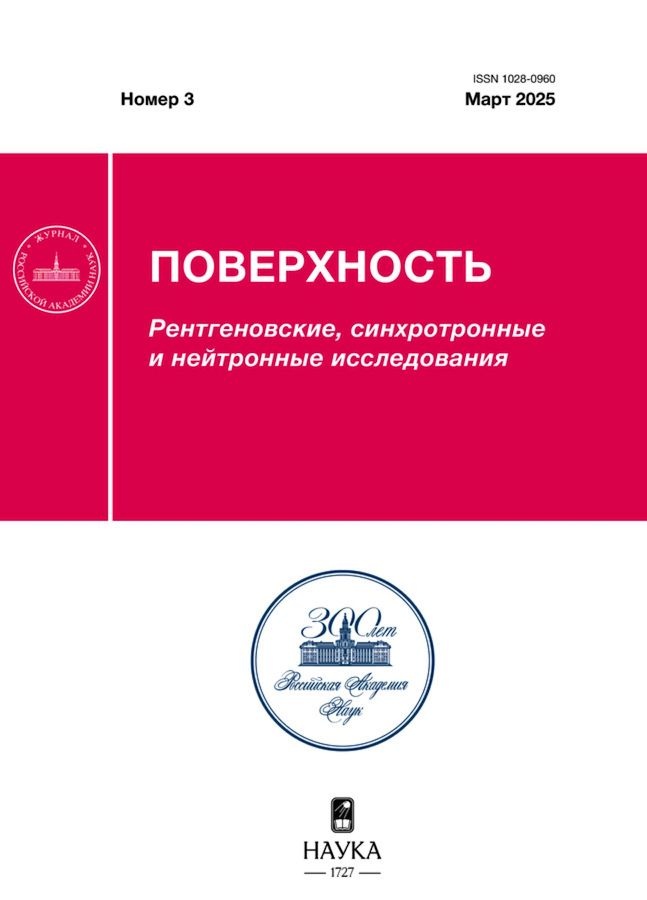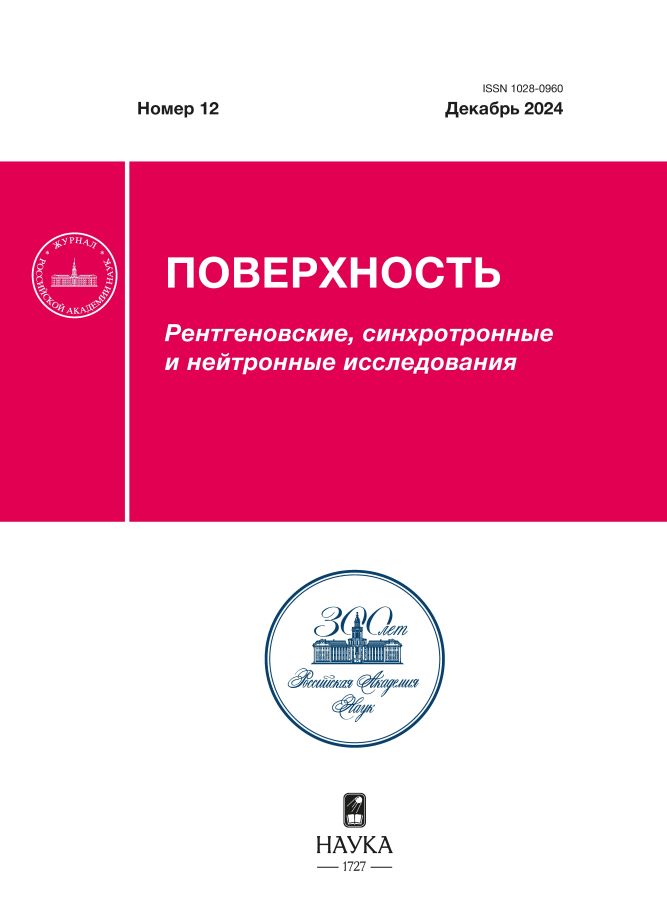Роль радиационных дефектов в решетках галлия и азота в компенсации проводимости n-GaN
- Авторы: Козловский В.В.1, Васильев А.Э.1, Лебедев А.А.2, Журкин Е.Е.1, Левинштейн М.Е.2, Стрельчук А.М.2, Малевский Д.А.2, Сахаров А.В.2, Николаев А.Е.2
-
Учреждения:
- Санкт-Петербургский политехнический университет Петра Великого
- Физико-технический институт им. А.Ф.Иоффе РАН
- Выпуск: № 12 (2024)
- Страницы: 72-77
- Раздел: Статьи
- URL: https://transsyst.ru/1028-0960/article/view/685357
- DOI: https://doi.org/10.31857/S1028096024120088
- EDN: https://elibrary.ru/QWTYBF
- ID: 685357
Цитировать
Полный текст
Аннотация
Проведен сравнительный анализ образования радиационных дефектов в решетках галлия и азота нитрида галлия при облучении протонами с энергией 15 МэВ и электронами с энергией 0.9 МэВ. Для торможения протонов проведено численное моделирование по программе SRIM, для электронов — аналитические расчеты. Показано, что при протонном облучении полная скорость генерации вакансий в решетке галлия ηПФ(Ga) составляет ~560 см–1, а в решетке азота ηПФ(N) ~1340 см–1. Детальные численные расчеты в режиме Full Cascade показали, что в решетке галлия скорость образования вакансий за счет протонов составляет 110 см–1, а за счет каскадных процессов — 450 см–1. В решетке азота эта “диспропорция” выглядит еще сильнее (60 и 1280 см–1 соответственно). При электронном облучении скорость генерации вакансий в решетке галлия ηПФ(Ga) составляет ~ 4.7 см–1, а в решетке азота ηПФ(N) ~2.0 см–1. Для экспериментального исследования радиационных дефектов в n-GaN, создающих глубокие уровни и компенсирующих проводимость материала, снимали прямые вольт-амперные характеристики диодов Шоттки, созданных на основе n-GaN. Показано, что скорости удаления носителей заряда в n-GaN составляют при облучении электронами 0.47 см–1, а при облучении протонами 150 см–1. Сравнение расчетных и экспериментальных параметров радиационного дефектообразования позволяет сделать вывод о механизме процесса компенсации и радиационных дефектах, ответственных за этот процесс.
Полный текст
Об авторах
В. В. Козловский
Санкт-Петербургский политехнический университет Петра Великого
Автор, ответственный за переписку.
Email: kozlovski@physics.spbstu.ru
Россия, Санкт-Петербург
А. Э. Васильев
Санкт-Петербургский политехнический университет Петра Великого
Email: electronych@mail.ru
Россия, Санкт-Петербург
А. А. Лебедев
Физико-технический институт им. А.Ф.Иоффе РАН
Email: shura.lebe@mail.ioffe.ru
Россия, Санкт-Петербург
Е. Е. Журкин
Санкт-Петербургский политехнический университет Петра Великого
Email: kozlovski@physics.spbstu.ru
Россия, Санкт-Петербург
М. Е. Левинштейн
Физико-технический институт им. А.Ф.Иоффе РАН
Email: shura.lebe@mail.ioffe.ru
Россия, Санкт-Петербург
А. М. Стрельчук
Физико-технический институт им. А.Ф.Иоффе РАН
Email: shura.lebe@mail.ioffe.ru
Россия, Санкт-Петербург
Д. А. Малевский
Физико-технический институт им. А.Ф.Иоффе РАН
Email: shura.lebe@mail.ioffe.ru
Россия, Санкт-Петербург
А. В. Сахаров
Физико-технический институт им. А.Ф.Иоффе РАН
Email: shura.lebe@mail.ioffe.ru
Россия, Санкт-Петербург
А. Е. Николаев
Физико-технический институт им. А.Ф.Иоффе РАН
Email: shura.lebe@mail.ioffe.ru
Россия, Санкт-Петербург
Список литературы
- Binari S.C., Dietrich H.B., Kelner G. et al. // Appl. Phys. 1995. V. 78. № 5. P. 3008. https://doi.org/10.1063/1.360712
- Kucheyev S.O., Boudinov H., Williams J.S. et al. // J. Appl. Phys. 2002. V. 91. № 7. P. 4117. https://doi.org/10.1063/1.1455154
- Polyakov A Y, Pearton S J, Frenzer P. et al. // Mater. Chem. C. 2013. V. 5 № 1. P. 877. https://doi.org/10.1039/C2TC00039C
- J. Pearton S.J., Ren F., Erin Patrick et al. // ECS J. Solid State Sci. Technol. 2016. V. 5. P. Q35. https://doi.org/10.1149/2.0251602jss
- Pearton J., Deist R., Ren F. et al. // J. Vac. Sci. Technol. A. 2013. V. 31. P. 5. https://doi.org/10.1116/1.4799504
- Karmarkar A.P., White B.D., Buttari D. et al. // IEEE Trans. Nucl. Sci. 2005. V. 52. P. 2239. https://doi.org/10.1109/TNS.2005.860668
- Лебедев А.А., Белов С.В., Мынбаева М.Г. и др. // Физика и техника полупроводников. 2015. Т. 49. Вып. 10. С. 1386. https://doi.org/10.1134/S1063782615100127
- Polyakov A.Y., Lee I.-H., Smirnov N.B. et al. // J. Appl. Phys. 2011. V. 109. P. 123703. https://doi.org/10.1063/1.3596819
- Emtsev V.V., Davydov V.Yu., Haller E.E. et al. // Physica B. 2001. V. 308–310. P. 58. https://doi.org/10.1016/S0921-4526(01)00650-0
- Ionascut-Nedelcescu A., Carlone C., Houdayer A. et al. // IEEE Trans. Nucl. Sci. 2002. V. 49. P. 2733. https://doi.org/10.1109/TNS.2002.805363
- SRIM-2013 Software Package. http://www.srim.org https://doi: 10.1007/978-1-4615-8103-1_3
- Ziegler J.F., Biersack J.P., Littmark U. The Stopping and Range of Ions in Solids. New York: Pergamon, 1985. 342 p.
- Look D.C., Reynolds D.C., Hemsky J.W. et al. // Phys. Rev. Lett. 1997. V. 79. P. 2273. https://doi.org/10.1103/PhysRevLett.79.2273
- MacKinley W.A., Feshbach H. // Phys. Rev. 1948. V. 74. P. 1759. https://doi.org/10.1103/PhysRev.74.1759
- Chen D., Cai D., Bernard D., Peneliau Y. // Nucl. Instrum. Methods Phys. Res. B. 2023. V. 535. P. 137. https://doi.org/10.1016/j.nimb.2022.12.007
- Dang T.-H., Konczykowski M., Jaffrès H. et al. // J. Vac. Sci. Technol. A. 2022. V. 40. P. 033416. https://doi.org/10.1116/6.0001821
- Titov A.I., Kucheyev S.O. // J. Appl. Phys. 2002. V. 92. № 10. P. 5740. https://doi.org/10.1063/1.1513199
- Emtsev V.V., Davydov V.Yu., Kozlovski V.V. et al. // Semicond. Sci. Technol. 2000. V. 15. P. 73. https://doi.org/10.1088/0268-1242/15/1/313
- Kozlovski V.V., Lebedev A.A., Bogdanova E.V. // J. Appl. Phys. 2015. V. 117. P. 155702. https://doi.org/10.1063/1.4918607
- Козловский В.В., Васильев А.Э., Лебедев А.А. и др. // Поверхность. Рентген., синхротр. и нейтрон. исслед. 2022. № 6. С. 64. https://doi.org/10.31857/S1028096022060097
- Козловский В.В., Васильев А.Э., Давыдовская К.С., Лебедев А.А. // Поверхность. Рентген., синхротр. и нейтрон. исслед. 2019. № 2. С. 82. https://doi.org/10.1134/S0207352819020070
Дополнительные файлы















